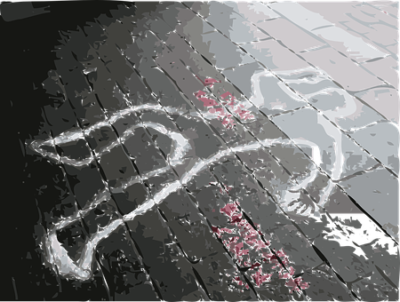The Greensboro City Council plans to approve a $500,000 contract to implement a Cure Violence program in two neighborhoods at the Tuesday, Oct. 15 meeting.
It appears the City Council intends to go forward with the same program that was formulated in secret meetings with Guilford County Commissioners, but the Guilford County Board of Commissioners declined to allocate $250,000 for the program and the current plan is for Greensboro to fund the entire program.
That plan calls for the program to cover two designated areas in East Greensboro, but not all of East Greensboro where the majority of the murders in Greensboro occur, much less all of Greensboro.
Councilmember Justin Outling who said last week he intends to support the program asked, “What does success look like and what is the metric of success for this or any other program?”
In other cities Cure Violence has claimed success when the homicide rate in the designated areas Cure Violence covered were lower even when the overall homicide rate in the city increased.
Will the City Council consider Cure Violence successful if the homicide rate in the designated areas is lower, but the homicide rate in the city rises?
Outling also questioned the fairness of a program that was designed to target violent crime in some but not all the neighborhoods that are experiencing an increase in violent crime. He said he had not been invited to the secret in depth discussions on the Cure Violence program that four city councilmembers had with four Guilford County commissioners and noted that how to measure the success of the program may have been discussed.
Mayor Nancy Vaughan said according to the reports she had read, for the Cure Violence program one measure of success was that, “the problem solving techniques in those neighborhoods change.”
As far as reducing the overall murder rate in a city, Vaughan said, “If Cure Violence hadn’t been in place is it possible that the murder rate would have been higher?”


Wow- Secret meeting(s), not including ALL council members, not including ALL “high crime districts”? Is this anyway for our city government to behave? Appears to be prejudicial. Those in the “ high crime districts” should raise their voice, not be quiet or just keep getting walked on and run over. You raise your voice when someone in your neighborhood is shot by a police officer why not question your representative?
I feel this program is a waste of taxpayers money. Would appear a few on council will be adding money to their personal accounts and not serving the good of the city as sworn to do. A state and/or federal audit should be conducted to verify any misappropriation of taxpayers money.
Hmmmmmmmmmm. $500,000 of our money for a program that doesn’t work, $540,00 for a dog park that isn’t necessary. A million here, a million there, first thing you know you’re talking about real money. PUH-LEEZE make me King of Guilford Country. I’ll put a stop to all these feather-bedding log-rolling schemes to get our Council members re-elected. This is the kind of stuff that Socialists want – ever-encircling projects to control our lives.
Vaughan said, “If Cure Violence hadn’t been in place is it possible that the murder rate would have been higher?” —
How stupid! It IS higher…ask Durham! Surely I am not the only outraged at this pure cronyism and blatant waste of $500,000 while simultaneously raising bus fare rates.
Another complete waste of taxpayers money. This program specifically separates itself from the Police Department. We cannot have law enforcement without including the professionals in the department. If the four special council members want this program, let them get it from the neighborhood that will be selected for the program.
Our city council members are not ignorant! But time and time again , they try very hard to disprove the previous statement which they succeeded with on this issue. Half a million dollars! And we all know that they will HAVE to allocate the monies again next year so they won’t look like absolute morons, so a MILLION DOLLARS will go away from our city tax fund; into Ms Johnson’s company, which has never run something this big, and is primarily a food bank . I wish people would remember this during election time.